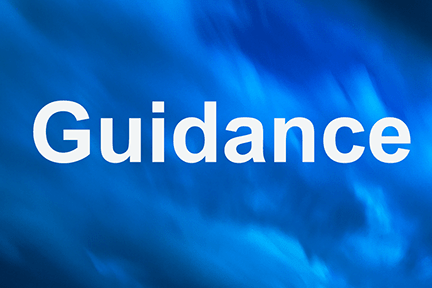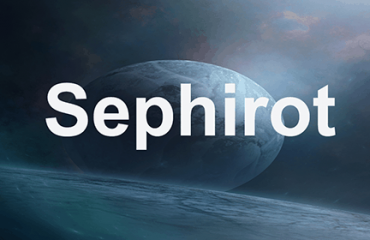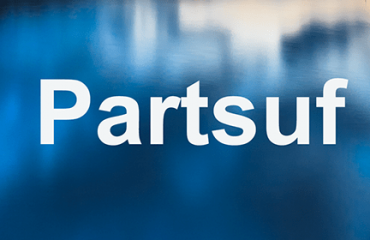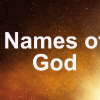Guidance
At first, the Creator was alone, filling all space with His energy. He was not bestowing His influence because there was no one to receive it. When He willed to create, He started to influence. Kabbalah is the only science that, in the least details, explains to us the true guidance of the world, so that we may understand His will.
The will of the Creator is to bestow goodness on His creatures; all the levels of creation and their guidance were put in place so His kindness could emanate to them, yet in such a way that they would be able to receive it.
The light of G-od is unique, of equal force, quality and beyond all description. The guidance of the world is manifested by different types of attributes such as rigor, mercy, etc. This unique light is therefore transformed or filtered by other lights, to give it various qualities or forces for a guidance based on the system of free choice, punishment, and reward.
These “transforming”, secondary lights are called Sephirot or Partsufim – configurations, and also attributes or qualities of G-od. A Sephira is, in a way, a “filter” that when the unique light enters it, transforms it into a particular force or quality by which the Creator guides the worlds.
The Kabbalah explains to us very precisely this true guidance, and how the worlds are guided by these extremely complex systems of forces or lights, which through their interactions provoke chain reactions that impact directly upon man and the worlds. Each one of these reactions has numerous ramifications with many details and results.
This complex system of forces or lights are the different Tikunim (actions) and Zivugim (unions) of the Sephirot and configurations to influence and make the guidance by means of their different arrangements and amalgamations.
There are two main kinds of guidance:
– The general guidance, which is for the subsistence of the worlds, and is not influenced by the actions of men.
This guidance is by means of the encircling Sephirot.
– The variable guidance, which is on the basis of justice, reward and punishment and is dependant on time and on the actions of man.
This guidance is by the linear Sephirot that are arranged in three columns: right, left and middle, representing the guidance of the world in the manner of kindness, rigor and mercy.
The guidance is mostly influenced by the different positioning and interactions of the masculine and feminine configurations, since they have a direct effect on the measure and balance of the factors of kindness, rigor and mercy.
The masculine configurations bestow kindness, the feminine bestow rigor. By their union, different equilibriums of the two forces of kindness and rigor make the guidance. Complete rigor will be the destruction of anything not perfect, while complete kindness will permit everything without restriction. However, these two aspects are necessary for the guidance based on justice, and for giving man the possibility of free choice.
The guidance is manifested by three main attributes:
· the attribute of kindness – right pillar
· the attribute of rigor – left pillar
· the attribute of mercy – middle pillar
The attribute of kindness
Kindness is mostly manifested by all the masculine aspects of the configurations[1], the Sephira חסד, by the concealments of the aspects of rigor and by the illuminations of the higher lights.
There are special moments, or days of bounty during the year, such as the Shabbat and Holidays. This is dependent on the different positions of the configurations[2]. When the masculine and feminine configurations are face to face, it is the ideal level and corresponds to the bestowing of abundance[3]. In the attribute of bounty, the guidance is from the right pillar – the pillar of kindness.
The attribute of judgment
Rigor is mostly manifested by all the feminine aspects as: the name of BaN (52), the Sephira גבורה and by all the concealments of the masculine aspects that represent bounty.
There are particular moments, or days of rigor during the year[4]. This is dependent on the different positions of the configurations. In the absence of Zivug (union), when the masculine and feminine configurations are back to back, it corresponds to dissimulation and rigor. In the attribute of judgment, the guidance is from the left pillar – the pillar of rigor.
The attribute of mercy
In the attribute of mercy, the guidance is from the middle pillar – the pillar of mercy. This attribute makes the balance between the attributes of rigor and bounty, to allow a more equilibrated guidance for the present existence. Without this equilibrium there would not be a possibility of guidance based on merit – reward and punishment, also called guidance of justice.
Will
All the Kabbalists agree that it is not possible to understand or have the slightest notion of the Nature of G-od, since our comprehension cannot attain this level[5]. However, by understanding these systems of guidance, we can learn to understand His will, how and why He created the world in what way He directs it, the purpose of the existence of evil, and the reasons for the dualism of reward and punishment, etc.
It is by understanding His will that we realize the importance of man, because only he, by getting closer to the Creator and observing His commandments, can influence these incredible forces that impact directly upon the guidance of the worlds.
Will to bestow
The will of the Creator is to bestow only goodness on His creatures, and to bring all the creation to participate in the revelation of His unicity at the end of the six thousand years. It is to give men the possibility of merit that His bounty is not revealed openly and that manifestations of the aspects of rigor are put in force.
There is no existence that is not composed of the aspects of the name of MaH (45) or BaN (52); the influencer and the receiver, the masculine and the feminine, bounty and rigor etc. The Ein Sof, B’H, influences when there is instigation from the receiver, the latter corresponding to the feminine receiving aspect of BaN (52). This influence is transmitted by the different illuminations of the Sephirot and then to the worlds.
It is the different equilibriums of the two forces of kindness and rigor that make the guidance. When rigors dominate harshness prevails, when bounty is in force, peace and kindness are bestowed. Thus, we see that everything that is, and happens, is always composed of a variable measure and balance of these two forces.
By allowing man to merit by his own efforts to get closer[6] to his Creator and receive His goodness, we see a very clear demonstration of His perfect justice.
Will to receive
By his nature man is himself a Keli (recipient) with a will to receive without limits, and containing a spiritual light; his soul. A guidance based on this desire of only receiving will not allow man to merit by his own efforts to get closer to his Creator.
These dual, attractive forces of good and bad influence man’s choices and the ways or levels of his service to the Creator. It is by his own free choice that he will choose his way and control these contrary forces.
The perfect goal for man is to elevate his bodily desires by sanctifying his ways, and resembling his Creator, by becoming a giver with a will to bestow goodness to all.
Free choice
The two main aspects of the present guidance, which are kindness and justice, were put in place to give man the possibility of serving the Creator by his free will.
At the creation, when the breaking of the seven Sephirot caused an important damage, G-od emanated lights of the aspect of the name of MaH (45) to repair the deterioration that was caused by this unbalanced inflow of energies. He could have done the complete Tikun (repair) of all the worlds with one emanation, but then, there would not have been a reason for the participation of man in this Tikun.
To give man the possibility of acting upon and repairing creation, G-od in a way, restrained His outflow of kindness to this world, to allow men to have merit by making the Tikun[7] with their own free will. While man’s good deeds have an effect on the four higher worlds, his bad deeds have consequences upon the four lower worlds. It is only when man sins that the negative side can grow in strength. The root of the Sitra A’hra (negative force) is in the lack or absence of the Kedushah (holiness). Its existence was willed by the Creator to also give man free choice.
The good and bad impulse
These forces of good and bad, positive and negative, are in a constant battle at the level of the world of עשיה (our physical world). Inside of man, these forces are: Yetser Hatov corresponding to his good or positive impulse and Yetser Hara’ corresponding to his bad or negative impulse.
This negative aspect (his Yetser Hara’) grows inside of man, cuts him off from the higher worlds, and uproots him from the Kedushah – holiness. It almost constantly tries to seduce him and make him stumble, while the Yetser Hatov (positive aspect), on the other side, tries to attract him to Torah and Mitsvot and to help him do the Tikun of his נשמה.
Without these two aspects of Yetser Tov and Yetser Hara’, men would be like angels, with no power to decide either on their actions or on their service to the Creator. Therefore, they would gain no merit from choosing good over bad, or following His commandments.
Free choice also gives rise to a system of perfect justice, whereby men will be punished or recompensed according to their own decisions and free choice.
[1] Aspects of the name of MaH – (45)
[2] It is because of the positions of these configurations every year at the same time, that these days are special
[3] Face to face allows a possibility of Zivug – union
[4] As the days of fasting
[5] But we can and are allowed to learn to understand His will from the time of creation
[6] By observing His commandments and by praying
[7] Bring back up the fallen sparks










